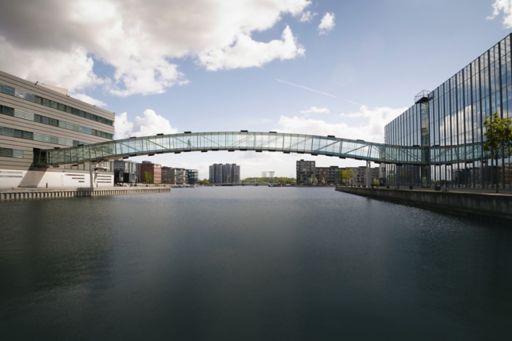Trend 10: Interdependence creates opportunities
Trend 10: Interdependence creates opportunities
The interdependency of infrastructure that is creating the greatest opportunities.

Gone are the days where infrastructure could be planned in distinct silos. In today’s environment, it is the interdependency of infrastructure that is creating the greatest opportunities (and, for some, risks).
Consider, for example, how the introduction of electric vehicles will impact road, transit, power and distribution networks. Or how navigation apps are encouraging integration between public and private transit options. Or how the introduction of 5G networks will change the way services (such as healthcare) are delivered.
Infrastructure planners who want to improve capacity and capability in one area will need to think much more critically about how other areas must be adapted to achieve their desired outcomes. It’s no use encouraging the adoption of electric vehicles if the existing electrical grid isn’t capable of distributing enough power to charge the cars themselves. There’s no point in rolling out a high-definition, e-health service if there isn’t enough mobile capacity to deliver the service to remote customers.
The challenge, however, is that few governments are structured in a way that allows infrastructure planners and owners to minimize the risks and maximize the interdependencies. For the most part, planning is still conducted in silos; budgets are still allocated by functional departments; regulation is still largely focused on individual technologies and sectors.
As we noted in last year’s Emerging Trends report, infrastructure authorities have started to think much more holistically and flexibly about how they plan, design and deliver needed assets. And that means understanding where current and future interdependencies exist and how they can be maximized (or the risks minimized) to flex with future developments and increasing demands for sustainability.
This year, we expect to see some of the world’s more progressive governments put more effort into creating much stronger integration between their functions and capabilities in order to provide authorities with the flexibility they need to properly manage and – if necessary – modulate the growing areas of interdependence. On the execution front, we also expect to see more jurisdictions move towards developing infrastructure agencies similar to those found in places like the UK, Australia and Canada.
To be clear, the need for increased flexibility is not an excuse for infrastructure authorities to forsake long-term planning. Quite the opposite; over the coming year, we expect to see infrastructure planners take the steps necessary to start considering multiple long-term plans, supported by robust scenario-planning capabilities, as a way to maximize the growing interdependence of infrastructure without leaving everything to chance.
Further Readings:
- Emerging Trends in Infrastructure 2019
- Trend 1: The public sector begins to reassert its role
- Trend 2: Data drives operational efficiency
- Trend 3: The challenges of megaprojects are magnified
- Trend 4: Eyes shift to emerging
- Trend 5: Embracing the evidence
- Trend 6: Sustainability goes mainstream
- Trend 7: Progress trumps divisiveness
- Trend 8: Competition for new technologies heats up
- Trend 9: The customer becomes king
- VIDEO: Emerging trends in infrastructure 2019


